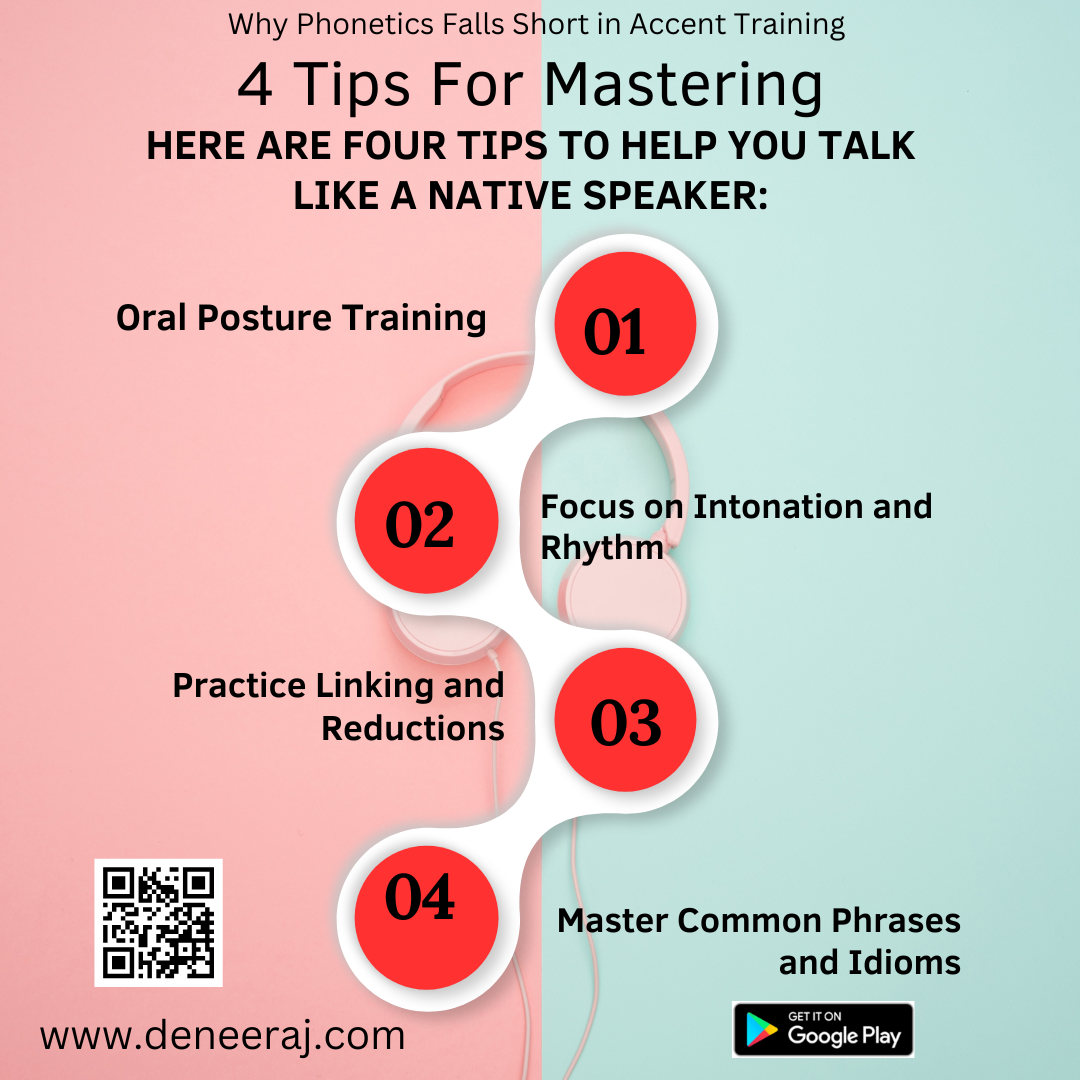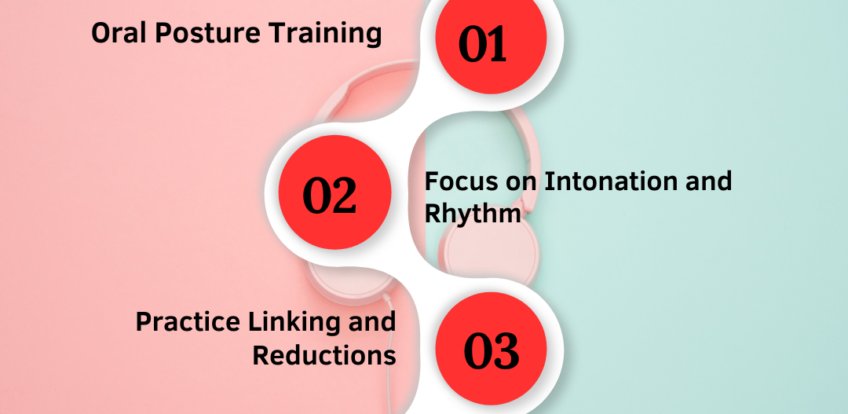Why Phonetics Falls Short in Accent Training
Why Phonetics Falls Short in Accent Training
Phonetics, the study of speech sounds, is often employed as a tool for accent training. However, its utility in mastering complex accents, such as American or British, is limited. While phonetics provides learners with a foundation for understanding how individual sounds are produced, it fails to capture the broader elements of speech, such as rhythm, flow, and intonation. These elements are crucial to acquiring a new accent effectively and sounding natural.

The Limitations of Phonetics
Phonetics focuses heavily on the articulation of individual sounds, known as phonemes. While this can help learners pronounce specific words correctly, it overlooks the connected speech patterns that define an accent. For example, American English has a distinct rhythm and a tendency to use a “flap T” in words like “butter” or “water,” which gives the accent its characteristic smoothness. Similarly, British English features varied intonation patterns and a non-rhotic pronunciation (the dropping of the “r” sound in words like “car” and “mother”). Phonetic transcriptions alone cannot adequately teach these nuanced features.

Moreover, English is a non-phonetic language, meaning there is no consistent one-to-one correspondence between its spelling and pronunciation. This discrepancy can confuse learners who rely solely on phonetics for guidance. For instance, the word “read” can be pronounced as /riːd/ in the present tense but as /rɛd/ in the past tense, even though both forms are spelled the same. Similarly, vowel sounds in English can vary greatly depending on the word and context. Without a focus on natural speech patterns, learners might struggle to apply phonetic rules consistently, resulting in stilted and unnatural speech.
Beyond Phonetics: What Makes an Accent?
Accents are shaped by a combination of oral posture, rhythm, stress, and intonation. Oral posture refers to how the tongue, lips, and jaw are positioned during speech. American English, for example, often involves a more relaxed jaw and open vowels, while British English may require a more precise articulation of consonants and vowels. Additionally, accents are distinguished by their rhythm—the way syllables are stressed and unstressed—and their unique melody, which phonetics alone cannot convey.
For instance, the sentence “I’m going to the store” might be pronounced in American English with a slight upward intonation at the end, indicating casualness or a question. In British English, the same sentence may be delivered with a more consistent downward intonation, giving it a formal or definitive tone. These subtle yet critical differences in delivery make an accent sound authentic.
The DMS Method: A Holistic Approach
To address the shortcomings of phonetics, the DMS (DEneeraj Multi-lingual Services) method provides a comprehensive and practical approach to accent training. This method emphasizes the following five key elements:
- Oral Posture: Learners are guided on how to adjust their mouth, tongue, and lip positions to produce sounds characteristic of the target accent. This foundational step ensures accuracy in sound production.
- Intonation: Intonation refers to the pitch and melody of speech. The DMS method trains learners to recognize and replicate the rising and falling pitch patterns typical of the target accent, enabling them to sound more natural and expressive.
- Contractions and Linking: Native speakers often contract words (e.g., “I’m” for “I am”) and link sounds between words. Mastering these features helps learners achieve the fluidity that characterizes native-like speech.
- Framing and Phrases: Common phrases and sentence structures are introduced to help learners become familiar with the natural framing of ideas in the target accent. This practice enhances both fluency and confidence.
- Stress and Rhythm: The method focuses on teaching learners how to apply the correct stress to syllables and words, as well as how to maintain the natural rhythm of sentences. This is critical for achieving an authentic accent.
Why Phonetics Falls Short in Accent Training I Acquisition of New Accents like American or British I Why the DMS Method Works
The DMS method prioritizes real-world application over theoretical knowledge. By focusing on practical techniques, it helps learners internalize the rhythm and melody of the target accent. Through consistent practice and feedback, learners gradually develop the ability to speak with clarity, confidence, and authenticity.
Additionally, the method incorporates listening exercises and mimicry, enabling learners to absorb the nuances of native speakers’ speech. This immersive approach not only improves pronunciation but also enhances overall communication skills, making learners more effective and engaging speakers.
The Path to Natural Accent Acquisition
While phonetics provides a useful starting point for understanding individual sounds, it falls short in equipping learners with the tools needed to acquire a new accent fully. A holistic approach, like the DMS method, addresses this gap by focusing on the broader aspects of speech, including rhythm, intonation, and oral posture. By incorporating these elements, learners can achieve a natural and confident accent, making their communication more effective and enjoyable.
For those seeking to master accents like American or British, the DMS live sessions offer a structured and immersive learning experience. Join today and take the first step toward unlocking your full potential in communication!
Get A Free Accent Screening Test Today I Pronunciation And Fluency Assessment I Speech Assessment Screening Test I Effective Communication What is a Speech and Accent Screening I Soft Skills Assessment I Grooming Skills Test I Corporate Soft Skills I American & British English
Objective: Accent modification is a versatile chameleon, enveloping both reduction and softening within its scope. It is the encompassing term for any program or training designed to bring about changes in an individual’s speech. This transformation could range from accent elimination to reduction, or even the adaptation of pronunciation to meet specific communication needs.
The Approach: Accent modification is celebrated for its adaptability. It bows to the specific goals, needs, and preferences of the speaker. Whether the destination is a complete metamorphosis of one’s accent or a more nuanced adjustment, this approach tailors itself accordingly.
Corporate British English Solutions, Corporate American English Solutions:
DEneeraj Multi-lingual Services (DMS) offers tailored language solutions for corporations, addressing both British English and American English course needs.
Business English Workshops, Corporate English Language Training, English for Business:
You can optimism Accent softening online Sessions in India, learn NOW skills, and sustain the learned skill to be a good Accent Trainer takes preparation, training, and consistent practice. This is all about effective and engaging Accent training, which is the foundation of effective accent modification tutoring. Your deeper knowledge to connect is your single greatest skill for special effects, and it must be consistent with what you to be an Effective Accent Trainer.
Accent Bias in the Workplace
Accent Bias in the Workplace I Accent reduction courses in India I accent neutralization Training I Accent softening Training Mumbai I Accent Modification Training for Professionals
Communication Online Courses I Accent Reduction Online Training I accent neutralization Online Training I accent modification Online courses | American English-Speaking Classes I Voice and Accent online Training I British Accent Training in India I American Accent Online Course I Soft Skills Training I Voice and Accent Neutralization Training I Corporate Soft Skills Training India I Accent Reduction Training Program I British English courses in India I British accent & pronunciation training for kids I British Accent Training in Bangalore I American Accent Training in Bangalore
Proven Results
Because we are superlative in accent reduction.





